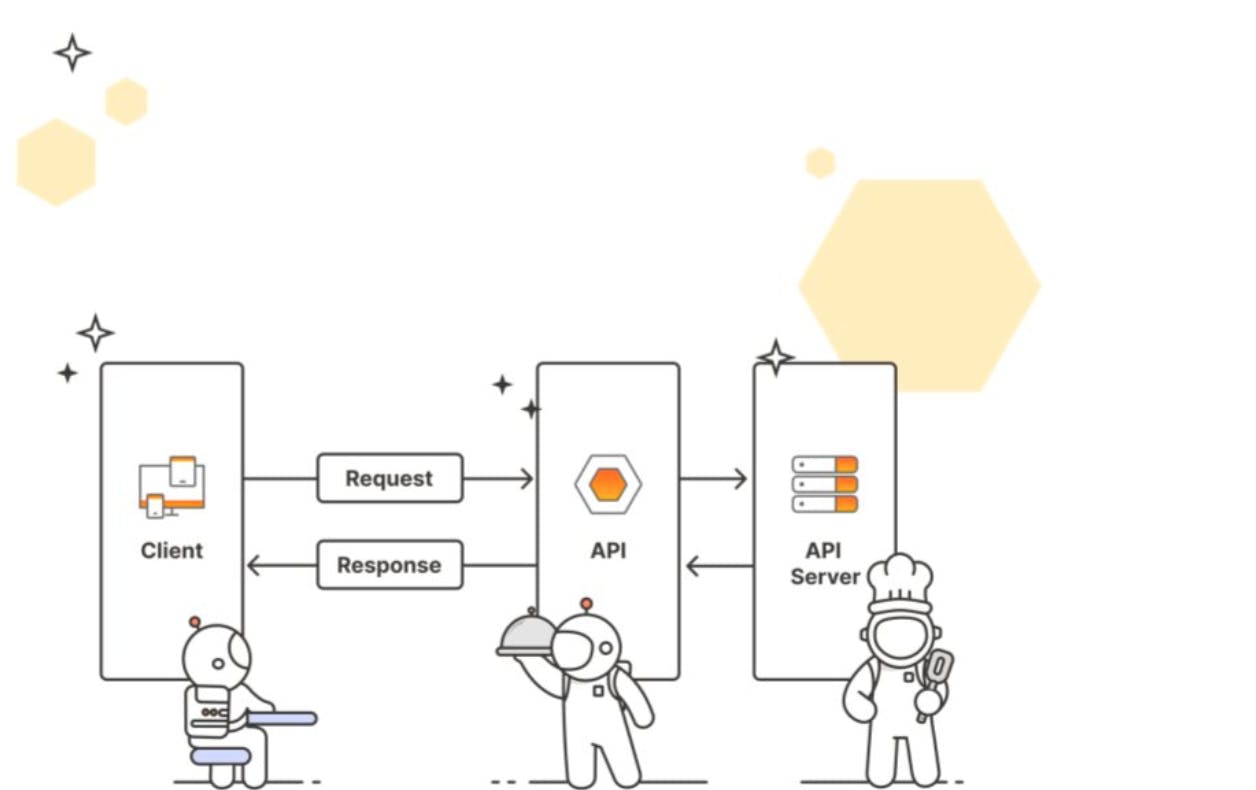Have you ever paid for something on the internet? Have you ever used a mobile app to check the weather? Have you listened to Spotify on both your computer and your phone? Have you ever used Google Maps within another app? Then you have interacted with APIs!
APIs (application programming interfaces) are used every day, whether you realize it or not. Even this article is brought to you by an API!
In this article, we'll go over how APIs work before going over the various types of APIs and how they're used. We'll also go over some common API use cases and provide some real-world API examples to get you started.
What is an API?
An API, or application programming interface, is a digital intermediary that allows different software components to communicate and transfer data. APIs are the foundation of modern software because they enable the sharing of resources and services between applications, organizations, and devices.
APIs are used when you place an order through an e-commerce store, request a ride from a Bolt or Uber app, or order delivery from your favorite restaurant.
How do APIs work?

APIs enable data sharing between applications, systems, and devices. This is accomplished through a request-response cycle. By interacting with an application, a user initiates a data request. The request is sent to the API, which retrieves and returns the data to the user.
APIs are similar to the waiters you meet when you visit a restaurant. Waiters act as an intermediary between customers and the kitchen's cooks. As a customer, you request the type of meal you want, and the waiter instructs the cooks to prepare it and return it to you.
APIs function in the same way, but the players involved have different names. Instead of a meal, the requester may request data or the performance of a service.

What are the different types of APIs?
There are various types of APIs and ways to categorize them. APIs can be classified based on who has access to them. You can also classify them according to their architectural style, of which there are many. We will only cover one aspect in this section.
Based on who can have access to the APIs, we have the following:
Private APIs
Private APIs, also known as internal APIs, are used to connect various software components within a single organization and are not accessible to third parties. Because the data and functionality available through the API are proprietary to the company, you will need to be granted permission to access them.
Public APIs
Public APIs, also known as open or external APIs, provide third-party developers with public access to an organization's data, functionality, or services, which they can integrate into their own applications.
Public APIs are generally simple to use because they are intended for general use and to encourage new use cases and integrations. Some public APIs are free, while others are available as paid products. For example, an e-commerce application may incorporate a public payment API, such as Stripe, to handle payment processing without having to build that functionality from scratch, or a rideshare app may incorporate the Google Maps API.
Partner APIs
Partner APIs allow two or more companies to collaborate on a project by sharing data or functionality. Due to limited access, APIs use authentication to make sure only authorized partners can use them.
Common Use Cases for APIs
Now, let's consider some common scenarios in which APIs can be useful:
Social Media Integration
Consider how you can log in to different websites using your Facebook or Google account. Social media APIs make this possible.
Payment Gateways
When you make online purchases, APIs handle the secure transmission of your payment information to the bank.
Weather Data
Weather forecasting apps frequently use APIs from organizations such as the National Weather Service to obtain real-time weather information.
E-commerce
E-commerce websites use APIs to find and show product information, reviews, and suggestions from different places.
Real-World Examples
This section will provide real-world examples to help you understand how APIs work and how you use them in your daily life.
Twitter API
Developers use this to access Twitter's data and add it to their apps, so users can tweet, follow people, and check their timelines.
OpenWeatherMap API
This API provides weather data and forecasts to a wide range of apps and websites, allowing users to stay up-to-date on the weather.
Google Maps API
Businesses use it to provide location-based services and navigation, making it easier for us to find directions.
Conclusion
APIs are the invisible heroes of the digital age, simplifying interactions between different software and enabling the seamless digital experiences we enjoy.
In this article, we discussed what APIs are and what they are used for. We also discussed the various API types, common use cases, and real-world examples.
This brief article only scratches the surface of what there is to know about API types and protocols. It should, however, serve as a starting point for further research and understanding of how to work with and test APIs.
